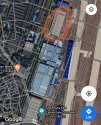plawolf
Lieutenant General
The whole hardened shelter thing doesn't make much sense if it can't defeat at least one of three weapon types:
SDB (which is usually credited with penetrating 1 meter of reinforced concrete under 1 meter of soil/earth)
Tomahawk CM
JASSM CM
Did not find any penetration data for those missiles but there was a Raytheon text from 2008 - they tested a tandem warhead (Tomahawk block V will use a tandem warhead) with a precursor portion of warhead being 24 inches in diameter. And the precursor burned through 19.5 feet of reinforced concrete with compression strength of 12600 lb/in2, which is a lot.
Probably similar tech is used in tomahawk warhead, though that warhead is smaller, at 18 inches in diameter. block V remanufacture will commence shortly but it may be a few years until entire tomahawk arsenal is remanufactured.
JASSM warheads, however, are of similar dimension and they already possess a similar tech pentrating warhead.
So JASSM today may already be able to penetrate 3-5 meters of reinforced concrete, and tomahawks may be expected to perform similarly within several years from today.
I think that trying to up armour shelters to be essentially bomb proof is a fools game because it’s much easier to upgrade warheads than to upgrade shelters. You can make the entire shelter out of tank grade composite armour and it would still be possible to defeat it with a dedicated warhead on something as big as a tomahawk.
What these shelters are primarily designed to do is protect aircraft against submunitions. That means a single tomahawk class weapon cannot take out entire flight lines as would be possible without hardened shelters.
Against special warhead heavy cruise missile class attacks, these shelters would have achieved their purpose if they can contain the damage so nothing other than the single shelter targeted is damaged in the strike, which is pretty much the best you can realistically expect to achieve.
This would massively increase the number of weapons an attacker would need to launch to try to take out the fighter strength at an air base, doubly so when you factor in air defences, and also means the damage would be very limited in case the odd enemy weapon did manage to punch through air defences.

